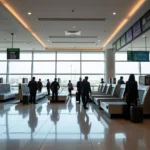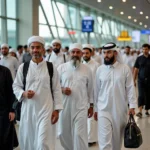The 1971 war, a pivotal moment in South Asian history, witnessed not only fierce battles on land and sea but also a significant air campaign. While the conflict’s human toll and geopolitical ramifications are well-documented, the story of the airports that served as crucial staging grounds often fades into the background. This article delves into the history of these vital hubs, exploring their roles, significance, and what became of them after the war.
The Strategic Importance of Airports in the 1971 War
Airports played a critical role in the 1971 war, serving as lifelines for troop movement, supply lines, and launchpads for air strikes. Their strategic importance cannot be overstated, as control of the skies often translated to control on the ground.
Both sides recognized the value of these aerial gateways, leading to intense fighting over their control. Capturing and defending airports became a key objective, shaping the conflict’s trajectory. The airports were not merely passive infrastructure but active theaters of war, witnessing daring raids, strategic bombings, and heroic defenses.
Uncovering the Names: A Glimpse into the Past
While historical records often mention the 1971 war airports by their locations, their actual names remain relatively obscure. This lack of widespread knowledge underscores the need to shed light on these forgotten airfields. Unearthing their names provides a more nuanced understanding of the conflict, highlighting specific locations and their significance within the broader narrative.
Researching these names requires delving into historical archives, military records, and firsthand accounts. It involves piecing together fragmented information, often scattered across different languages and sources. However, this endeavor is crucial to paint a more complete picture of the war’s impact and legacy.
From Battlegrounds to Peacetime: The Fate of 1971 War Airports
Following the 1971 war, the airports that played such pivotal roles underwent various transformations. Some continued to operate as vital transportation hubs, their wartime significance etched into their history. Others fell into disuse, their runways slowly reclaimed by nature, serving as silent reminders of a turbulent past.
Understanding the fate of these airports offers a unique perspective on the war’s lasting impact on the region’s infrastructure and development. It also reveals how societies grapple with the legacy of conflict, choosing to preserve, repurpose, or abandon these tangible connections to their past.
 Modern Airport Built Near a Historical Site from the 1971 War
Modern Airport Built Near a Historical Site from the 1971 War
Conclusion
The airports of the 1971 war, though often overlooked, played an undeniable role in shaping the conflict’s course. Their stories offer valuable insights into the strategic realities of the war and its impact on the region. By remembering these forgotten airfields, we gain a deeper appreciation for the complexities of the 1971 war and its enduring legacy. For further information and assistance in planning your next journey, please contact us at +13089626264, email us at [email protected], or visit us at 404 Bothwell St, Oxford, NE 68967, USA. Our customer service team is available 24/7.

